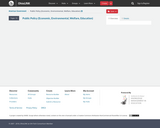
2074 Results

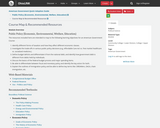
Public Policy (Economic, Environmental, Welfare, Education)The resources included here are intended to map to the following learning objectives for an American Government Course:Identify different forms of taxation and how they affect different economic classes.Investigate the trade-offs in various public policy decisions (e.g. Affordable Care Act vs. free market healthcare vs. socialized medicine.)Define budget deficits and differentiate it from the national debt, and identify how government debt is different from debts held by individuals.Discuss the basics of the federal budget process and major spending items.Be able to differentiate between fiscal and monetary policy and identify the key actors for both.Explain the outlines of immigration policy and be able to define key terms like: DREAMers, DACA, chain immigration, etc.
- Subject:
- Political Science
- Material Type:
- Module
- Author:
- Timothy Kinsella
- Date Added:
- 07/11/2018
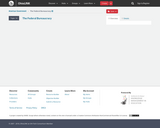
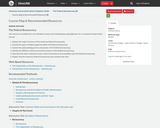
The Federal BureaucracyThe resources included here are intended to map to the following learning objectives for an American Government Course:Explain the major functions of the American federal bureaucracyClassify the types of federal agencies within the federal bureaucracyExplain the policymaking process and power of the federal bureaucracyIdentify the different internal and external actors of the federal bureaucracyDescribe how other institutions exert control and enforce accountability over the federal bureaucracyExplain how the American federal bureaucracy has evolved over time
- Subject:
- Political Science
- Material Type:
- Module
- Author:
- Timothy Kinsella
- Date Added:
- 07/11/2018
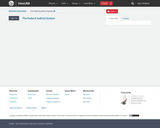
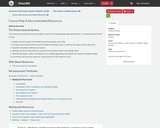
The Federal Judicial SystemThe resources included here are intended to map to the following learning objectives for an American Government Course:Explain how the power of the federal courts has grown over time.Compare and contrast the structure of federal and state courts, as well as the types of cases they hear.Describe the judicial selection processes.Identify the factors that influence Supreme Court justices when they decide cases.Describe the ways in which the federal courts shape legal policy and decide the scope of individual rights.Summarize the structure, features, and processes of the Supreme Court.
- Subject:
- Political Science
- Material Type:
- Module
- Author:
- Timothy Kinsella
- Date Added:
- 07/11/2018
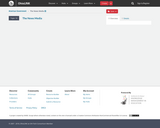
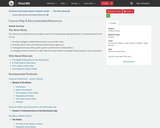
The News MediaThe resources included here are intended to map to the following learning objectives for an American Government Course:Develop strategies to differentiate between real and fake news.Describe various forms of media bias and why they might occur.Investigate how news affects public opinion and the limits of media effects.Investigate how the evolution of cable news and social media has changed news production and consumption.
- Subject:
- Political Science
- Material Type:
- Module
- Author:
- Timothy Kinsella
- Date Added:
- 07/11/2018
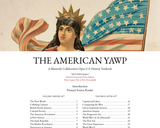
The American Yawp constructs a coherent and accessible narrative from all the best of recent historical scholarship. Without losing sight of politics and power, it incorporates transnational perspectives, integrates diverse voices, recovers narratives of resistance, and explores the complex process of cultural creation. It looks for America in crowded slave cabins, bustling markets, congested tenements, and marbled halls. It navigates between maternity wards, prisons, streets, bars, and boardrooms. Whitman’s America, like ours, cut across the narrow boundaries that strangle many narratives. Balancing academic rigor with popular readability, The American Yawp offers a multi-layered, democratic alternative to the American past.
- Subject:
- History
- U.S. History
- Material Type:
- Textbook
- Provider:
- The American Yawp
- Date Added:
- 04/27/2020

In an increasingly digital world in which pedagogical trends are de-emphasizing rote learning and professors are increasingly turning toward active-learning exercises, scholars are fleeing traditional textbooks. Yet for those that still yearn for the safe tether of a synthetic text, as either narrative backbone or occasional reference material, The American Yawp offers a free and online, collaboratively built, open American history textbook designed for college-level history courses. Unchecked by profit motives or business models, and free from for-profit educational organizations, The American Yawp is by scholars, for scholars. All contributors—experienced college-level instructors—volunteer their expertise to help democratize the American past for twenty-first century classrooms.
- Subject:
- History
- U.S. History
- Material Type:
- Textbook
- Provider:
- Stanford University
- Author:
- Ben Wright
- Joseph L. Locke
- Date Added:
- 11/08/2021
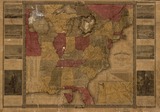
This version of The American Yawp, Volume I is a modified version of The American Yawp, Volume I published by Stanford University Press and edited by Joseph Locke and Ben Wright. The original textbook is licensed CC-BY-SA 4.0, and this version is licensed in the same way.
In this CSCC version, the original book was modified by the addition of focus questions and key terms for each chapter. A pop-up glossary was also added. The book format was also adapted using the Kotobee authoring platform to create a web-based eBook. Additional material is adapted from Benjamin Pugno and Dea Boster, History of Western Medicine to 1700, Autumn 2017 ed. (Columbus, OH: Columbus State Community College, 2017).
The American Yawp, Volume 1 serves as the textbook for HIST 1151 American History to 1877. To take this course for credit, register at https://www.cscc.edu/.
The eBook can be viewed directly at:
https://csbooks.org/hist1151
A set of 30 primary source readings is also available to accompany this CSCC version of The American Yawp. The primary sources may be accessed at the following link:
https://ohiolink.oercommons.org/authoring/136-hist-1151-american-history-to-1877-primary-source-
Please attribute this work in the following manner:
"The American Yawp, Vol. 1" by Dea Boster, Christianna Hurford, and Jennifer Nardone, Columbus
State Community College is licensed under CC BY-SA 4.0 / A derivative from the original work found at http://www.americanyawp.com/.
- Subject:
- History
- U.S. History
- Material Type:
- Textbook
- Provider:
- Columbus State Community College
- Author:
- Christianna Hurford
- Columbus State Community College
- Dea Boster
- Jennifer Nardone
- Date Added:
- 08/05/2019
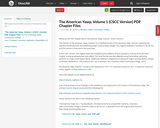
PDF chapter files for CSCC's version of The American Yawp, Vol. 1
- Subject:
- History
- U.S. History
- Material Type:
- Textbook
- Provider:
- Columbus State Community College
- Date Added:
- 08/30/2019
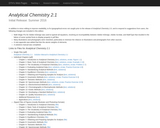
As currently taught in the United States, introductory courses in analytical chemistryemphasize quantitative (and sometimes qualitative) methods of analysis along with a heavydose of equilibrium chemistry. Analytical chemistry, however, is much more than a collection ofanalytical methods and an understanding of equilibrium chemistry; it is an approach to solvingchemical problems. Although equilibrium chemistry and analytical methods are important, theircoverage should not come at the expense of other equally important topics.
The introductory course in analytical chemistry is the ideal place in the undergraduate chemistry curriculum forexploring topics such as experimental design, sampling, calibration strategies, standardization,optimization, statistics, and the validation of experimental results. Analytical methods comeand go, but best practices for designing and validating analytical methods are universal. Becausechemistry is an experimental science it is essential that all chemistry students understand theimportance of making good measurements.
My goal in preparing this textbook is to find a more appropriate balance between theoryand practice, between “classical” and “modern” analytical methods, between analyzing samplesand collecting samples and preparing them for analysis, and between analytical methods anddata analysis. There is more material here than anyone can cover in one semester; it is myhope that the diversity of topics will meet the needs of different instructors, while, perhaps,suggesting some new topics to cover.
- Subject:
- Chemistry
- Physical Science
- Material Type:
- Textbook
- Provider:
- DePauw University
- Author:
- David Harvey
- Date Added:
- 06/20/2016
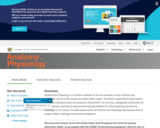
Anatomy and Physiology is a dynamic textbook for the two-semester human anatomy and physiology course for life science and allied health majors. The book is organized by body system and covers standard scope and sequence requirements. Its lucid text, strategically constructed art, career features, and links to external learning tools address the critical teaching and learning challenges in the course. The web-based version of Anatomy and Physiology also features links to surgical videos, histology, and interactive diagrams.
- Subject:
- Anatomy/Physiology
- Life Science
- Material Type:
- Textbook
- Provider:
- Rice University
- Provider Set:
- Openstax College
- Author:
- Brandon Poe
- Dean H. Kruse
- Eddie Johnson
- J. Gordon Betts
- James A. Wise
- Jody E. Johnson
- Kelly A. Young
- Mark Womble
- Oksana Korol
- Peter DeSaix
- Date Added:
- 03/06/2013
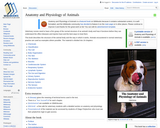
Veterinary nurses need to have a firm grasp of the normal structure of an animal’s body and how it functions before they can understand the effect diseases and injuries have and the best ways to treat them. This book describes the structure of the animal body and the way in which it works. Animals encountered in normal veterinary practice are used as examples where possible.
- Subject:
- Anatomy/Physiology
- Life Science
- Material Type:
- Textbook
- Provider:
- Wikibooks
- Author:
- Ruth Lawson
- Date Added:
- 04/27/2020
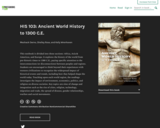
This textbook is divided into three sections: Africa, Asia & Americas, and Europe. It explores the history of the world from pre-historic times to 1300 C.E., paying specific attention to the interconnections (or disconnections) between peoples and regions. Students are encouraged to think beyond their experiences with western civilizations to recognize the widespread impact of historical events and trends, including how they helped shape the world today. Touching upon each world region, the readings investigate the impact of environment, economics, politics, and religion on diverse societies. Key topics are sites of change and integration such as the rise of cities, religion, technology, migration and trade, the spread of disease, gender relationships, warfare and social movements.
- Subject:
- Ancient History
- History
- Material Type:
- Textbook
- Provider:
- Cleveland State University
- Author:
- Kelly Wrenhaven
- Meshack Owino
- Shelley Rose
- Date Added:
- 01/08/2021

This book provides an overview of the current debates about the nature and extent of our moral obligations to animals. Which, if any, uses of animals are morally wrong, which are morally permissible (i.e., not wrong) and why? What, if any, moral obligations do we, individually and as a society (and a global community), have towards animals and why? How should animals be treated? Why?
We will explore the most influential and most developed answers to these questions – given by philosophers, scientists, and animal advocates and their critics – to try to determine which positions are supported by the best moral reasons.
- Subject:
- Arts and Humanities
- Philosophy
- Material Type:
- Textbook
- Author:
- Nathan Nobis
- Date Added:
- 04/27/2020
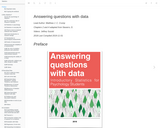
This is a free textbook teaching introductory statistics for undergraduates in Psychology. This textbook is part of a larger OER course package for teaching undergraduate statistics in Psychology, including this textbook, a lab manual, and a course website. All of the materials are free and copiable, with source code maintained in Github repositories.
- Subject:
- Psychology
- Social Science
- Material Type:
- Textbook
- Author:
- Matthew J.C. Crump
- Date Added:
- 04/27/2020

With the narrow approval of the Constitution in Virginia and New York, in June and July 1788, respectively, the Federalists seemed to have won an all-out victory. The relatively small states of North Carolina and Rhode Island would hold out longer, but with 11 states ratifying and all the populous ones among them, the Federalists had successfully waged a remarkable political campaign of enormous significance and sweeping change.
- Subject:
- History
- U.S. History
- Material Type:
- Reading
- Provider:
- Independence Hall Association
- Date Added:
- 11/30/2023
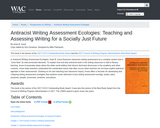
In Antiracist Writing Assessment Ecologies, Asao B. Inoue theorizes classroom writing assessment as a complex system that is "more than" its interconnected elements. To explain how and why antiracist work in the writing classroom is vital to literacy learning, Inoue incorporates ideas about the white racial habitus that informs dominant discourses in the academy and other contexts. Inoue helps teachers understand the unintended racism that often occurs when teachers do not have explicit antiracist agendas in their assessments. Drawing on his own teaching and classroom inquiry, Inoue offers a heuristic for developing and critiquing writing assessment ecologies that explores seven elements of any writing assessment ecology: power, parts, purposes, people, processes, products, and places.
- Subject:
- Composition and Rhetoric
- English Language Arts
- Material Type:
- Textbook
- Provider:
- WAC Clearinghouse
- Author:
- Asao B. Inoue
- Date Added:
- 01/01/2017